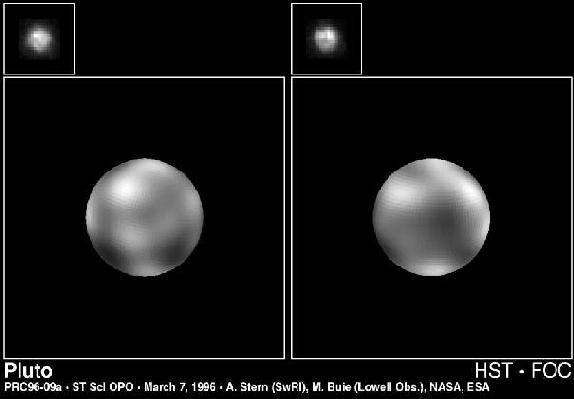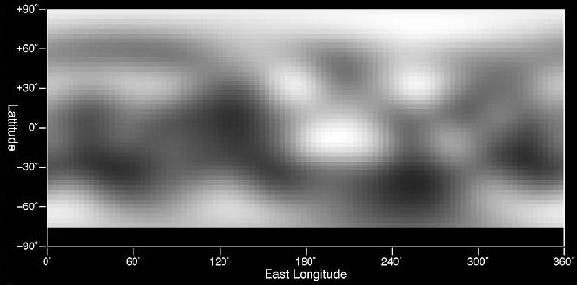 |
| First images of Pluto's surface |
 |
| First images of Pluto's surface |
The two smaller inset pictures at the top are actual images from Hubble of opposite hemispheres of Pluto. Each square pixel (picture element) is more than 100 miles across. At this resolution, Hubble discerns roughly 12 major "regions" where the surface is either bright or dark. The larger images (bottom) are from a global map constructed through computer image processing performed on the Hubble data. The tile pattern is an artifact of the image enhancement technique (more info). Here is a Hubble Space Telescope movie of Pluto rotating.
 |
| Surface map of Pluto (Hubble Space Telescope-Faint Object Camera) |
The brightness variations in this map may be due to topographic features such as basins and fresh impact craters. However, most of the surface features are likely produced by frosts that migrate across Pluto's surface with its orbital and seasonal cycles (more info).